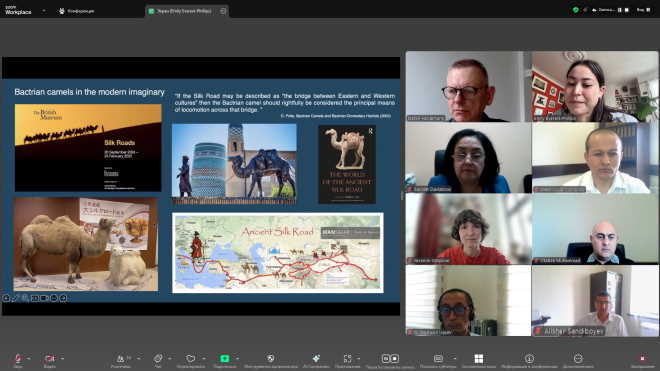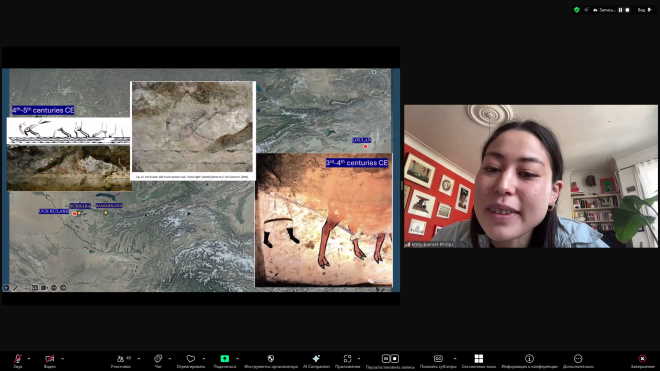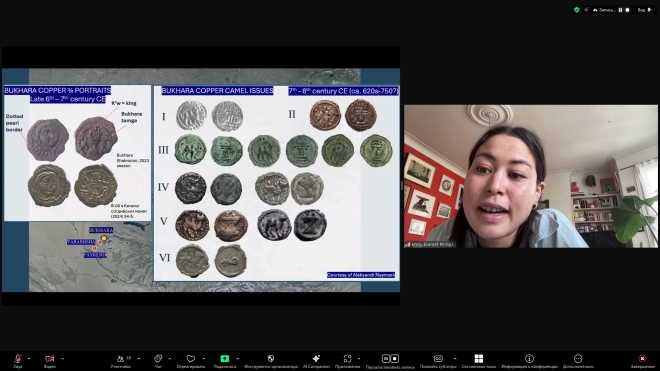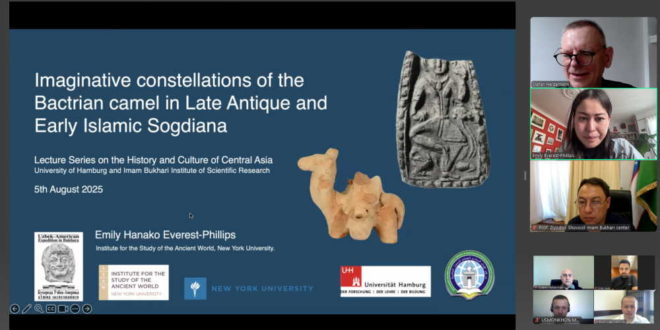An online seminar was held at the Imam Bukhari International Scientific-Research Center in collaboration with the Institute of Asian and African Studies affiliated with the University of Hamburg, Germany, as part of the series titled “Cultural Treasures of the Zarafshan Oasis.” The seminar brought together Center staff, researchers from domestic and international academic institutions, as well as scholars from countries including Germany, Turkey, and the United States.

At the seminar, Emily Everest-Phillips, a doctoral candidate at the Institute for the Study of the Ancient World at New York University, delivered a lecture on “Imagined Representations of Bactrian Camels in Central Asia (Sogdiana) from the Late Antique Period to the Early Islamic Era.”
The researcher discussed how the Bactrian camel was perceived within the Sogdian civilization and the role it played in people’s lives. She emphasized that it is incorrect to view this animal solely as a means of transport for goods along the Great Silk Road. In fact, for the Sogdians, the camel symbolized strength, protection, and even divinity and political authority. For instance, from the 2nd century BCE onward, depictions of camel battles on various metal belts and bone artifacts indicate that camels were regarded as symbols of valor. In statuettes and images, camels were not merely portrayed as ordinary beasts of burden but rather as emblems of youthful bravery, honor, and courage.
A terracotta camel figurine dating back to the 3rd century, discovered in the Bukhara region, depicts the animal with vessels hung on both sides and its head held high. This representation indicates that camels were not merely utilitarian trade animals but also significant creatures in daily life. Notably, wall paintings from the 6th to 8th centuries depict divine couples seated on camels, which are interpreted as “Camel Deities.” While some scholars associate this imagery with Vahram from Zoroastrianism, the presenter emphasized that this figure constitutes a distinct local symbol unique to the Sogdian culture.

Additionally, coins from the 7th–8th centuries issued by the rulers of Bukhara depict a camel on one side and a sacrificial fire on the other, symbolizing the divine legitimacy of political authority. Camel imagery also appears on the seals of Devastich, who resisted the Arab invasions, indicating that the camel was valued as a political emblem.
In her lecture, Ms. Emily Everest-Phillips emphasized that historical sources represent the Bactrian camel not only as a means of travel or trade but also as a symbol of bravery, protection, divinity, and authority. She concluded that, unlike modern tourist perceptions, historical depictions and sculptures play a crucial role in understanding the true spiritual and cultural significance of the camel.

The lecture offered a fresh and profound perspective on the worldview, culture, and artistic heritage of the Sogdians, enriching prevailing understandings of ancient civilizations. Such research fosters greater respect and interest in our cultural heritage, encouraging a commitment to remembering and preserving our roots.
Imam Bukhari International Scientific Research Center
Press service
 Imom Buxoriy xalqaro ilmiy-tadqiqot markazi bukhari.uz
Imom Buxoriy xalqaro ilmiy-tadqiqot markazi bukhari.uz












